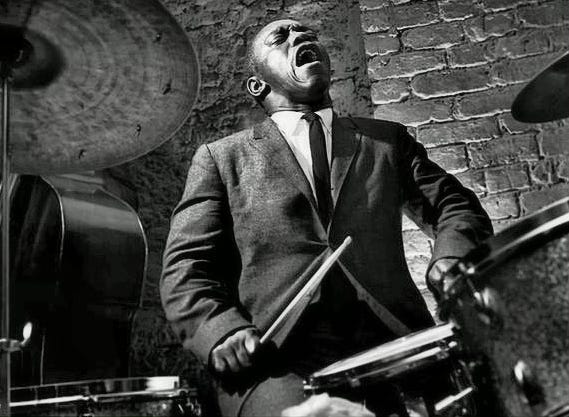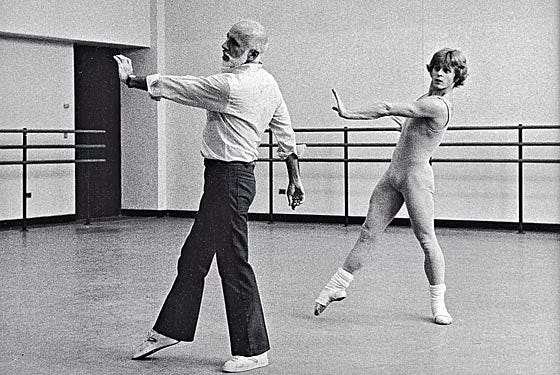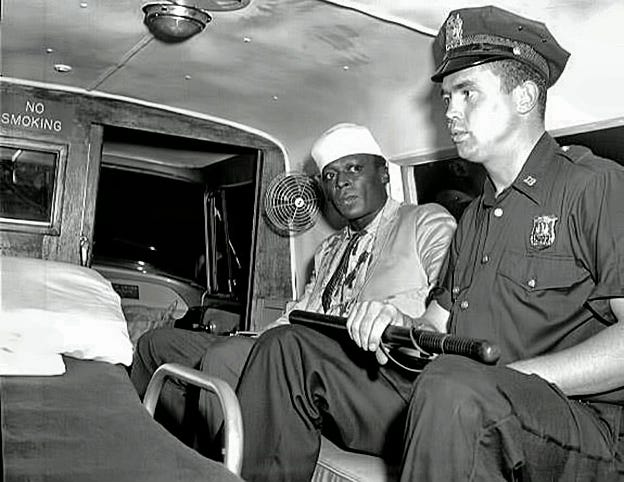On this day in 1975 — 48 years ago — Saturday Night Live debuted on NBC
Paul McCartney does sound check on the Saturday Night Live set, December, 2010
On this day in 1975 — 48 years ago — Saturday Night Live debuted on NBC.
A topical comedy sketch show, the first season of Saturday Night Live featured Chevy Chase, John Belushi, Dan Aykroyd, Gilda Radner, Garrett Morris, Jane Curtin and Laraine Newman.
It went go on to become the longest-running, highest-rated show on late-night television. The 90-minute program, which from its inception has been broadcast live from Studio 8H in the GE Building at Rockefeller Center, includes a different guest host and musical act each week.
The opening sketch of each show ends with one actor saying, “Live from New York, it’s Saturday Night!”
Created by the Canadian-born comedy writer, Lorne Michaels, SNL has introduced a long list of memorable characters and catchphrases — including Gilda Radner’s Roseanne Roseannada, the Coneheads, Billy Crystal’s Fernando (“You look mahvelous”), Dana Carvey’s Church Lady (“Isn’t that special?”), bodybuilders Hans and Franz (“We’re going to pump you up”) and Coffee Talk host Linda Richman (“like buttah” and “I’m all verklempt”). All have become part of pop-culture history.
The show, whose cast has changed continually over the years, has also launched the careers of such performers as Bill Murray, Eddie Murphy, Chris Rock, Mike Myers, Adam Sandler, Chris Farley, David Spade, Jon Lovitz, Julia Louis-Dreyfus and Tina Fey.
Some SNL sketches have even been turned into feature films, the two most successful examples being 1980’s The Blues Brothers and 1992’s Wayne’s World. The show was originally known as NBC’s Saturday Night because there was another show on ABC called Saturday Night Live with Howard Cosell. However, NBC eventually purchased the naming rights, and since 1977 the show has been called Saturday Night Live.
Lorne Michaels served as the show’s producer from 1975 to 1980, followed by Jean Doumanian from 1980 to 1981. Dick Ebersol helmed the show from 1981 to 1985. Michaels returned to the program that year, and has remained executive producer ever since.
The influential comedian, George Carlin, hosted the debut episode of SNL. Later that year, Candace Bergen became the first woman to assume SNL hosting duties. She went on to host the program four more times. In 1982, seven-year-old Drew Barrymore hosted the show, becoming the youngest person ever to do so.
Starting in 1976, Steve Martin has hosted SNL 14 times. Since 1990, Alec Baldwin has hosted the show 13 times. John Goodman has hosted the show a dozen times, beginning in 1989.
Other frequent guest hosts include Buck Henry, Chevy Chase, Tom Hanks and Christopher Walken. Musical guests who’ve performed on SNL five or more times include Paul Simon, Tom Petty & The Heartbreakers, James Taylor, Sting, Beck and the Foo Fighters.
SNL is known for its topical parodies and impersonations, and for pushing boundaries with its sketches. The show is also recognized for its political humor. Chevy Chase famously portrayed President Gerald Ford as a klutz, while Dana Carvey spoofed President George H.W. Bush and his “read my lips” line.
More recently, Amy Poehler and Kate McKinnon have played Hillary Clinton in numerous skits (including some with Clinton herself) and Tina Fey has portrayed the 2008 Republican vice-presidential nominee, Sarah Palin. Alec Baldwin portrayed Donald Trump.
Here is the first cast of Saturday Night Live. From left to right: Laraine Newman, John Belushi, Jane Curtin, Gilda Radner, Dan Aykroyd, Garrett Morris (rear) and Chevy Chase
Thanks History.com
Art Blakey, Paris, 1958
Photo by Herman Leonard
Art Blakey was born 104 years ago today.
Known later as Abdullah Ibn Buhaina, Blakey was a jazz drummer and bandleader. Along with Kenny Clarke and Max Roach, he was one of the inventors of the modern bebop style of drumming.
Blakey’s brand of bluesy, funky hard bop was and continues to be profoundly influential on mainstream jazz. For more than 30 years, his band — Art Blakey and the Jazz Messengers — included many young musicians who went on to become prominent names in jazz.
The band's legacy is thus not only known for the music it produced, but as a proving ground for several generations of jazz musicians. Blakey's groups are matched only by those of Miles Davis in this regard. Blakey was inducted into the Jazz Hall of Fame in 1982.
Blakey continued performing and touring with the group into the late 1980s. He died in 1990 at age 71.
Here, Blakey joins the Jazz Messengers in a 1963 concert at Sanremo, Italy.
Daryl Hall is 77 years old today.
A rock, R&B and soul singer, keyboardist, guitarist, songwriter and producer, Hall is best known as the co-founder and lead vocalist of Hall & Oates (with co-founder/guitarist/songwriter, John Oates).
Hall had several hits in the 1970s and early 1980s, and is regarded as one of the best soul singers of his generation.
Guitarist Robert Fripp, who collaborated with him in the late 1970s and early 1980s, has written, "Daryl's pipes were a wonder. I have never worked with a more able singer."
Hall was inducted into the Songwriters Hall of Fame in 2004.
Here, Hall performs “Eyes for You” with Jason Mraz.
Dottie West, country music singer and songwriter, was born 91 years ago today.
Along with her friends and co-recording artists, Patsy Cline and Loretta Lynn, she is considered one of the genre's most influential and groundbreaking female artists. West's career started in the early 1960s, with her hit, "Here Comes My Baby Back Again.”
In the 1960s, West was one of the few female country singers working in what was then a male-dominated industry, influencing other female country singers like Lynn Anderson, Crystal Gayle, Barbara Mandrell, Dolly Parton and Tammy Wynette. Throughout the 60s, West had country hits within the Top 10 and 20.
In the early 1970s, West wrote a popular commercial for the Coca-Cola company, titled "Country Sunshine," which she nearly brought to the top of the charts in 1973. In the late-70s, she teamed up with country-pop superstar, Kenny Rogers, for a series of duets, which brought her career in directions it had never gone before, earning Platinum selling albums and #1 records for the very first time.
Her duet recordings with Rogers, like "Every Time Two Fools Collide," "All I Ever Need Is You" and "What Are We Doin' In Love," eventually became country music standards.
In the mid-1970s, her image and music underwent a metamorphosis, bringing her to the peak of her popularity as a solo act, and reaching #1 for the first time on her own in 1980 with, "A Lesson in Leavin'."
On August 30, 1991, West was scheduled to perform at the Grand Ole Opry. Shortly after leaving her apartment at Nashville's Wessex Towers, West's car, a Chrysler New Yorker that Kenny Rogers had given her following the loss of her possessions at an IRS auction, stalled in front of the old Belle Meade theater on Harding Road.
West's 81-year-old neighbor, George Thackston, spotted her on the side of the road and offered to drive her to the Opry for her scheduled appearance. Frantic about getting to the Opry on time, she had urged the man to speed.
He lost control of his vehicle while exiting at the Opryland exit on Briley Parkway at a speed of 55 miles per hour. The exit ramp was posted for 25 miles per hour.
The car left the ramp, went airborne and struck the central division. West did not believe she was injured as badly as her neighbor had been and reportedly did not seem harmed to officers who responded to the scene. She insisted that he be treated first.
Though she thought she was unharmed, West suffered severe internal injuries and proved to have suffered both a ruptured spleen and a lacerated liver. Her spleen was removed that Friday and, the following Monday, she underwent two more surgeries to stop her liver from bleeding. The operations ultimately failed.
Doctors said that West knew the extent of her injuries and even visited with Kenny Rogers shortly before her last operation. On September 4, 1991, during her third operation, West died on the operating table at 9:43 a.m., at the age of 58.
Here, Dottie West performs “Here Comes My Baby.”
Todd Snider, Beacon Theatre, New York City, Sept. 20, 2013
Photo by Frank Beacham
Todd Snider, singer-songwriter with a musical style that combines Americana, alt-country and folk, is 57 years old today.
After high school, Snider moved to Santa Rosa, Calif., to be a harmonica player. Then his brother, who lived in Austin, bought him a ticket to move there. After seeing Jerry Jeff Walker in a local bar, Snider decided that he didn't need a band to be a musician.
After moving to Memphis in the mid-1980s and establishing residency at a club named the Daily Planet, he was discovered by Keith Sykes, a member of Jimmy Buffett's Coral Reefer Band. A longtime acquaintance of John Prine and Walker, Sykes began to work with Snider to help advance his career.
Prine hired him as an assistant and then invited him to open shows. In time, Buffett heard Snider's demo tapes and signed him to his own label.
On his music, Snider has said "I was just trying to come up with the best... most open hearted ... well-thought-out lyrics I could come up with. I wanted every song to be sad and funny at the same time, vulnerable and entertaining at the same time, personal and universal at the same time. I wanted every song to be as uniquely written as possible and then I wanted to perform them in a studio loose and rugged and hopefully as uniquely as I could. My hope is to be hard to describe and/or new…I'm not saying I am. I'm just saying that's the hope."
Here, Snider performs “Statistician’s Blues” in 2007.
Jerome Robbins works with Mikhail Baryshnikov at the New York City Ballet
Photo by Martha Swope
Jerome Robbins was born 105 years ago today.
Robbins was a theater producer, director and choreographer known primarily for Broadway theater and dance, but who also occasionally directed films and produced for television. His work ranged from classical ballet to contemporary musical theater.
Among the numerous stage productions he worked on were On the Town, Peter Pan, High Button Shoes, The King And I, The Pajama Game, Bells Are Ringing, West Side Story, Gypsy: A Musical Fable and Fiddler on the Roof.
Robbins was a five time Tony Award winner and a recipient of the Kennedy Center Honors. He received two Academy Awards, including the 1961 Academy Award for Best Director with Robert Wise for West Side Story.
A documentary about his life and work — Something to Dance About — featuring excerpts from his journals, archival performance and rehearsal footage, and interviews with Robbins and his colleagues, premiered on PBS in 2009.
Following a bicycle accident in 1990 and heart-valve surgery in 1994, Robbins began showing signs of a form of Parkinson's disease in 1996. His hearing was also quickly deteriorated. He nevertheless staged Les Noces for City Ballet in 1998, his last project.
Robbins suffered a stroke two months later, and died at his home in New York City on July 29, 1998. On the evening of his death, the lights of Broadway were dimmed for a moment in tribute. He was cremated and his ashes were scattered into the Atlantic Ocean.
Imagine art by Jim Warren
On this day in 1971 — 52 years ago — John Lennon released his classic song, “Imagine.” It became the best selling single in Lennon’s solo career.
The song’s lyrics encourage the listener to imagine a world at peace without the barriers of borders or the divisions of religion and nationality, and to consider the possibility that the focus of humanity should be living a life unattached to material possessions.
Lennon and Yoko Ono co-produced the song and album of the same name with Phil Spector. Recording began at Lennon's home studio at Tittenhurst Park, England, in May, 1971, with final overdubs taking place at the Record Plant, in New York City, during July.
BMI named "Imagine" one of the 100 most-performed songs of the 20th century.
Here, Lennon performs “Imagine” in 1975.
Police brutality, especially against people with dark skin, is nothing new. It has happened for many years. Only the recent emergence of smartphones has revealed its frequency.
The great musician, Miles Davis, was a victim of police brutality.
In this photo, Davis rides in an ambulance to St. Clare’s Hospital with Patrolman Gerald Kildduff on August 25, 1959. Davis was given ten stitches in his scalp at the hospital.
Davis was standing outside of Birdland, the jazz club, where he was performing, when Kilduff told him to move along.
A scuffle ensued, and a passing plainclothes detective hit Davis with his blackjack, dropping him to the ground. Davis was charged with disorderly conduct and assault.
His arrest was later ruled illegal and a “travesty of justice” by a three-judge panel.
The Pines, Fire Island, New York as winter approaches
Photo by James Gavin











